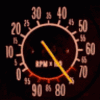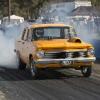Hi All,
Did a bit of digging around and found some Interesting stuff.
Here is an Extract from this link:-
Every piston fires at a different instant in time, which creates vibrations in the crankshaft that grow in magnitude with the number of cylinders, the length of the crankshaft and engine speed. The constant pounding and stress may cause small hairline cracks to develop in and around journals, and particularly around oil holes. That's why crankshafts should always be examined with a magnetic particle inspection machine to check for cracks before they are reused.
Used crankshafts also have to be checked for straightness. The constant loading and pounding combined with wear in the main bearings may result in a bent shaft. Straightness can be checked by placing the ends of the crank in V-blocks and using a dial indicator to measure deflection in the center main bearing as the crank is rotated. If the crank is bent more than about .0015" (specifications will vary depending on bearing clearances), it must be straightened in a hydraulic press or replaced. Forged steel cranks will typically accept more correction than a cast crank. But if the crank is bent beyond the point where it cannot be straightened without weakening or cracking it, it must be replaced.
Now here is something interesting, they are saying that the Steel Billet 4340 (stronger metal than the high end forged) Crankshaft is better than the Forged Steel cranks for Vibration? Dave I
Edited by TORYPOWER, 22 May 2013 - 01:51 PM.




 View Garage
View Garage













